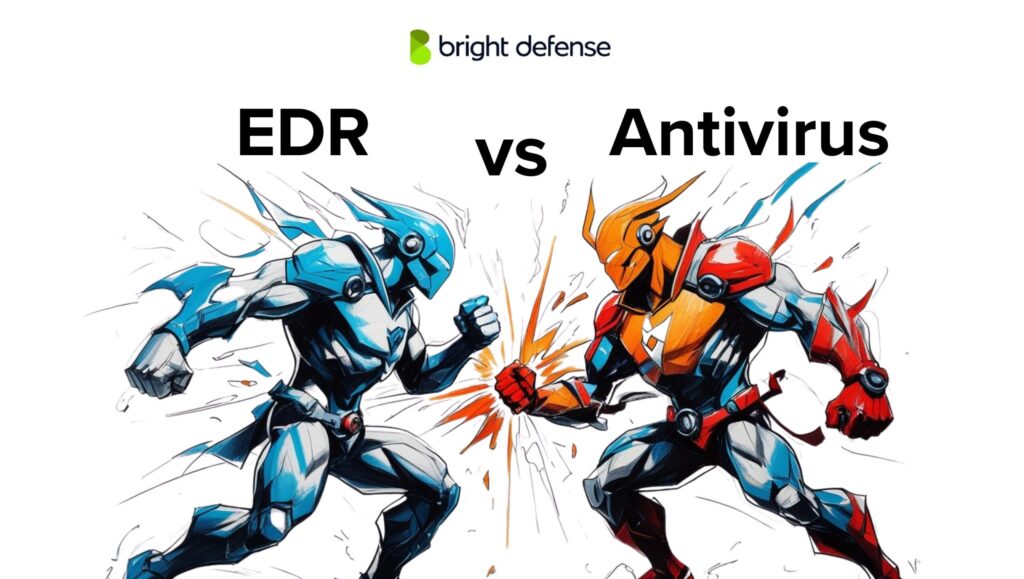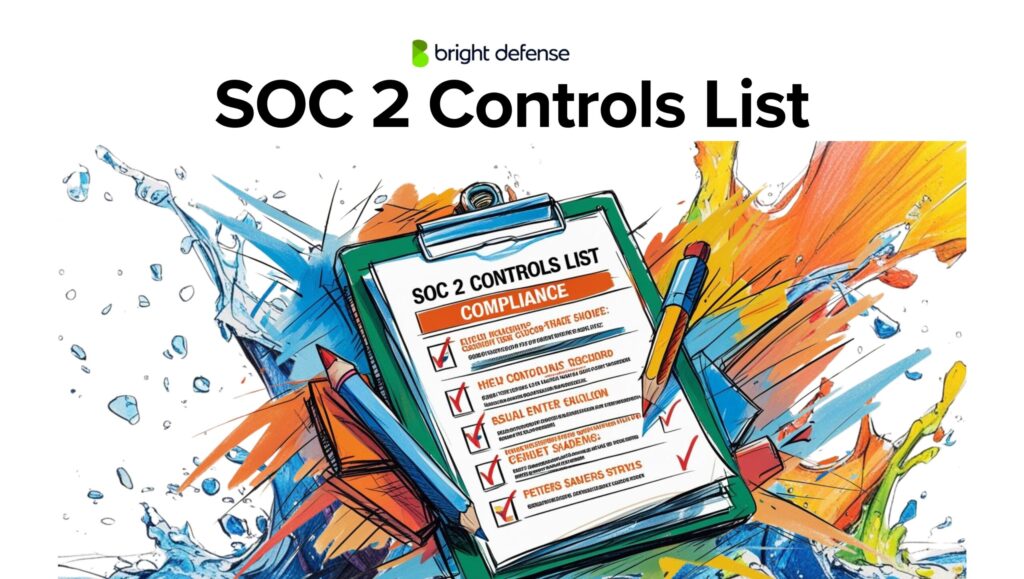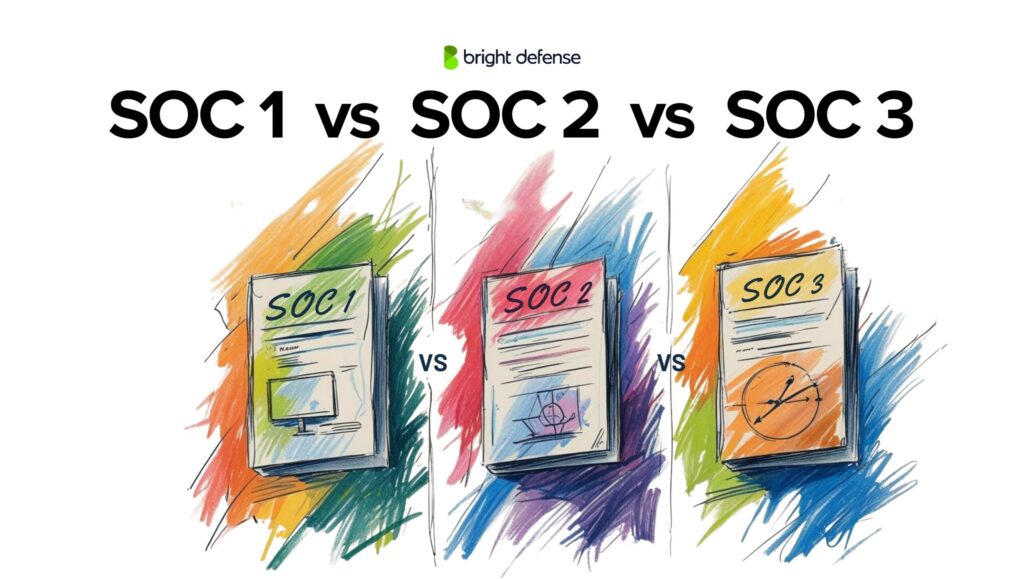
Tim Mektrakarn - CISSP | CISA | ISO 27001
June 28, 2025
FedRAMP vs CMMC Compliance: Decoding Federal Cybersecurity Frameworks
Introduction to FedRAMP and CMMC
Two critical cybersecurity-focused frameworks, the Federal Risk and Authorization Management Program (FedRAMP) and the Cybersecurity Maturity Model Certification (CMMC), have emerged as essential standards for organizations working with the Federal government.
While they share the common goal of strengthening cybersecurity defenses, they differ in focus, scope, and application. This blog post delves into these differences, offering a comprehensive comparison of FedRAMP vs CMMC.
FedRAMP vs CMMC Comparison Table
| Category | FedRAMP | CMMC |
|---|---|---|
| Origin and Purpose | Created to standardize security assessment, authorization, and monitoring of cloud services used by federal agencies. | Developed by the DoD to improve the protection of sensitive defense information within the Defense Industrial Base (DIB). |
| Primary Audience | Cloud Service Providers (CSPs) offering services to federal agencies. | Defense contractors and subcontractors handling Controlled Unclassified Information (CUI). |
| Security Framework Basis | Based on NIST SP 800-53, adapted to cloud computing environments. | Based on NIST SP 800-171, focused on non-federal systems protecting CUI. |
| Focus Area | Cloud services and the risks associated with cloud deployments. | Organizational cybersecurity maturity and practices within defense contracting entities. |
| Impact or Maturity Levels | Categorizes services into Low, Moderate, and High impact levels based on FIPS 199 standards. | Defines 3 maturity levels: Foundational, Advanced, and Expert (previously 5 levels, now simplified under CMMC 2.0). |
| Security Control Approach | Uses extensive control baselines per impact level; highly prescriptive and technical. | Applies a set of cybersecurity practices that scale with the sensitivity of information handled. |
| Assessment Process | Involves an assessment by a Third Party Assessment Organization (3PAO) followed by an Authorization to Operate (ATO). | Requires an audit by a CMMC Third Party Assessment Organization (C3PAO) for certification at the applicable level. |
| Timeline and Complexity | Often more complex and lengthy due to authorization layers and ongoing audits. | Generally shorter; emphasizes verification of current practice implementation. |
| Continuous Monitoring | Ongoing monitoring is a formal requirement, including periodic audits and reporting. | Monitoring is expected as part of maturity, but less structured than FedRAMP’s continuous authorization model. |
| Application Environment | Applies strictly to cloud environments hosting federal data. | Applies across the entire organization or contractor systems that interact with DoD-sensitive information. |
| Compliance Drivers | Required to work with federal civilian agencies as a CSP. | Required to bid on DoD contracts where CUI is involved. |
| Standards Alignment | NIST 800-53, FIPS 199, FISMA. | NIST 800-171, DFARS 252.204-7012. |
| Scope of Controls | Technical and operational controls adapted to the nature of cloud services. | Mix of technical, procedural, and policy-based controls scaled to organizational maturity. |
| Typical Use Case | A SaaS provider seeking to host a government application in the cloud. | A manufacturing subcontractor needing to show cybersecurity maturity to maintain eligibility for DoD contracts. |
| Enforcement Entity | General Services Administration (GSA) via FedRAMP Program Management Office. | Department of Defense (DoD). |
CMMC and FedRAMP: Background Information
CMMC and FedRAMP were created to address different federal cybersecurity needs, with each framework rooted in a specific mission and regulatory scope:
FedRAMP: History and Purpose
FedRAMP was established to provide a standardized approach to security assessment, authorization, and continuous monitoring for cloud products and services used by federal agencies. It ensures that cloud services meet consistent security requirements, reducing duplicative efforts and saving time and money.
CMMC: History and Purpose
CMMC, on the other hand, was introduced by the Department of Defense (DoD) to enhance the protection of sensitive defense information housed on contractors’ networks. It aims to reinforce the cybersecurity posture of the defense industrial base (DIB).
Key Components and Requirements of CMMC and FedRAMP
FedRAMP uses control baselines for cloud services, while CMMC applies a maturity model to cybersecurity practices. Let’s check out the differences in more details:
FedRAMP Components
When comparing FedRAMP vs CMMC, FedRAMP revolves around a three-pronged approach: authorization, security assessment, and continuous monitoring. It categorizes cloud services into low, moderate, and high impact levels, each with a set of baseline security controls.

CMMC Components
CMMC outlines five maturity levels, ranging from “Basic Cybersecurity Hygiene” to “Advanced/Progressive. Each level comprises a set of practices and processes that increase in complexity and rigor.
Comparison of Components
While FedRAMP focuses on cloud services and categorizes them based on impact levels, CMMC emphasizes the maturity and sophistication of cybersecurity practices across the defense supply chain. Both FedRAMP and CMMC are based off of NIST Frameworks that we’ll discuss later.
Target Audience and Scope
Understanding who FedRAMP and CMMC apply to is key to determining which framework an organization must follow. Here’s what you should consider:
FedRAMP’s Target Audience
FedRAMP is primarily aimed at cloud service providers (CSPs) that intend to offer their services to federal agencies. A crucial aspect of FedRAMP is its Cloud Service Offering (CSO) impact levels, which play a significant role in determining the security requirements for cloud services used by federal agencies.
Understanding FedRAMP’s CSO Impact Levels
FedRAMP categorizes cloud services into three distinct impact levels – Low, Moderate, and High – each representing the potential impact of a security incident on an organization. These levels align with the Federal Information Processing Standards (FIPS) 199, categorizing information and information systems according to the severity of impact on an organization in the event of a breach in confidentiality, integrity, or availability.
Low Impact Level
- Targeted Use: The Low impact level is suitable for cloud services that handle data where the loss of confidentiality, integrity, and availability would result in limited adverse effects on an agency’s operations, assets, or individuals.
- Security Controls: This level requires the implementation of a baseline set of security controls. It’s typically used for public-facing services and applications with less sensitive information.
Moderate Impact Level
- Targeted Use: The Moderate impact level is the most common for federal cloud services. It’s appropriate for handling data where the potential impact is more serious but not catastrophic.
- Security Controls: This level demands a more comprehensive set of security controls compared to the Low impact level. The controls are designed to protect against more significant threats and are suitable for services handling sensitive but unclassified information.
High Impact Level
- Targeted Use: High impact level is designed for cloud services that, if compromised, could have severe or catastrophic effects on agency operations, assets, or individuals. This includes data that is classified or of critical importance to the nation’s security.
- Security Controls: At this level, the most stringent security controls are applied. The services must adhere to rigorous security standards to safeguard highly sensitive government data.
The Significance of CSO Impact Levels
The categorization of cloud services into these impact levels ensures that federal agencies can appropriately match the sensitivity of their data with the security posture of the cloud service. By doing so, FedRAMP ensures that agencies leverage cloud technologies without compromising on the security and integrity of government data. This tailored approach to risk management is crucial in the ever-evolving landscape of cybersecurity threats, making FedRAMP a key component in the federal government’s strategy to securely adopt cloud computing.
CMMC’s Target Audience
CMMC targets defense contractors and subcontractors, requiring them to demonstrate compliance with the appropriate level of certification based on the sensitivity of the information they handle. In comparing FedRAMP vs CMMC, we can see that FedRAMP is more specific towards Cloud Service Providers hosting sensitive data whereas CMMC is generalized towards defense contractors and subcontractors.
Compliance and Certification Process
Both FedRAMP and CMMC require formal assessments, but the processes differ in scope, depth, and the type of authorization or certification granted. Here’s why their certification process differs:
FedRAMP Compliance Process
Achieving FedRAMP compliance involves a thorough assessment by a third-party assessment organization (3PAO), resulting in an Authorization to Operate (ATO).
CMMC Certification Process
Contractors seeking CMMC certification undergo an assessment by a CMMC Third Party Assessment Organization (C3PAO) to demonstrate compliance with the required maturity level.

Comparison of Processes
FedRAMP’s authorization process is generally more complex and time-consuming, while CMMC certification is more about demonstrating the implementation of specific cybersecurity practices. Typically the timeline for FedRAMP vs CMMC is longer for the former and the latter is typically able to be implemented and assessed in a shorter timeframe.
FedRAMP and CMMC: Rooted in NIST Standards
The National Institute of Standards and Technology (NIST) standards deeply intertwine with both of these frameworks, yet they anchor in different NIST publications. Organizations seeking effective navigation through these compliance pathways must understand the grounding of FedRAMP in NIST 800-53 and CMMC in NIST 800-171.
FedRAMP: An Extension of NIST 800-53
FedRAMP, established to standardize the security assessment and authorization for cloud products and services used by U.S. federal agencies, is closely based on NIST Special Publication 800-53. NIST 800-53, titled “Security and Privacy Controls for Federal Information Systems and Organizations,” offers a comprehensive set of controls designed to safeguard federal information systems against cybersecurity threats.
Integration with NIST 800-53
FedRAMP’s adoption of NIST 800-53 is not merely superficial. The program incorporates the NIST 800-53 control set, adapting and extending it to specifically address the unique risks associated with cloud computing. This integration ensures that cloud service providers (CSPs) offering services to federal agencies meet a high standard of security, reflecting the rigor of NIST 800-53.
Emphasis on Cloud Security
By leveraging the NIST 800-53 framework, FedRAMP focuses on areas critical to cloud security, such as incident response, contingency planning, and system and communications protection. This alignment ensures a comprehensive approach to securing cloud environments, an essential consideration given the increasing reliance on cloud technologies in government operations.
CMMC: Building on NIST 800-171
In contrast, the CMMC framework, required for defense contractors and subcontractors, is primarily based on NIST Special Publication 800-171, “Protecting Controlled Unclassified Information in Nonfederal Systems and Organizations.” This publication provides guidelines for safeguarding sensitive federal information that resides in non-federal systems and organizations – a context highly relevant to the defense industrial base (DIB).
Adoption of NIST 800-171 Principles
CMMC incorporates the core principles and requirements of NIST 800-171, focusing on protecting controlled unclassified information (CUI) in non-federal systems. It translates these principles into specific cybersecurity practices and processes across three maturity levels, ensuring a scalable and adaptable approach to compliance.

The Interplay of Standards in Cybersecurity Compliance
The alignment of FedRAMP with NIST 800-53 and CMMC with NIST 800-171 highlights the interconnected nature of cybersecurity standards. FedRAMP vs CMMC reflects a broader trend towards a more unified and standardized approach to cybersecurity, especially in sectors involving federal information and operations.
Implications for Businesses
Businesses that provide cloud services to federal agencies must align with FedRAMP requirements, while defense contractors need to focus on achieving the appropriate CMMC level. Understanding both is crucial for organizations that operate in both domains.
Challenges and Considerations
Organizations often face challenges in resource allocation, understanding the specific requirements, and the ongoing nature of compliance. Strategic planning and investment in cybersecurity infrastructure are key to successfully navigating these frameworks.
Whether you’re comparing FedRAMP vs CMMC, it’s important to look at the overall objectives you are trying to achieve in order to be prepared to contract with the US Government.
Final Thoughts on CMMC vs FedRAMP
While FedRAMP and CMMC serve different purposes and target different audiences, their ultimate goal is to enhance the cybersecurity posture of organizations involved with the U.S. government. Understanding their nuances is essential for businesses in the respective sectors to ensure compliance and protect sensitive information effectively.
Bright Defense Can Help
Bright Defense can help you implement NIST 800-53 and/or NIST 800-171 security controls. We begin by conducting a gap assessment to determine your current position and then develop a roadmap to deploy the necessary controls, enabling you to meet all the requirements of the chosen NIST framework. We do continuous monitoring and continuous compliance which are mini audits that happen on a monthly basis to ensure your security posture is improving over time.

FAQ: Understanding the Differences Between FedRAMP and CMMC
1. What is FedRAMP?
FedRAMP (Federal Risk and Authorization Management Program) is a U.S. government-wide program that standardizes the security assessment, authorization, and continuous monitoring processes for cloud products and services used by federal agencies.
2. What is CMMC?
CMMC (Cybersecurity Maturity Model Certification) is a certification process for defense contractors that ensures appropriate levels of cybersecurity practices and processes are in place to protect controlled unclassified information (CUI) on their systems.
3. How do FedRAMP and CMMC differ in their purpose?
FedRAMP primarily focuses on standardizing cloud security for federal agencies, ensuring cloud services used by these agencies meet stringent security requirements. In contrast, CMMC actively secures the defense supply chain by ensuring defense contractors implement necessary cybersecurity measures to protect sensitive defense information.
4. Are FedRAMP and CMMC based on the same NIST standards?
No, different NIST standards form the basis for each framework. FedRAMP aligns with NIST SP 800-53, offering guidelines for securing federal information systems, while CMMC bases itself on NIST SP 800-171, targeting the protection of controlled unclassified information in non-federal systems.
5. Who needs to comply with FedRAMP?
Cloud service providers (CSPs) that wish to offer their services to federal agencies must comply with FedRAMP. It is also relevant for federal agencies that are selecting cloud service providers.
6. Who needs to comply with CMMC?
Defense contractors and subcontractors working with the Department of Defense (DoD) are required to comply with CMMC. The level of CMMC certification required depends on the sensitivity of the information they handle.
7. What is the certification process like for FedRAMP and CMMC?
For FedRAMP, CSPs undergo an assessment by a third-party assessment organization (3PAO), leading to an Authorization to Operate (ATO). In contrast, for CMMC, defense contractors must be assessed by a CMMC Third Party Assessment Organization (C3PAO) to verify compliance with the required maturity level.
8. Can a company be both FedRAMP and CMMC certified?
Yes, a company can be both FedRAMP and CMMC certified, especially if it operates as a cloud service provider for federal agencies and also contracts with the DoD. However, each certification must be obtained separately, as they have different requirements and processes.
9. How often do organizations need to renew their FedRAMP and CMMC certifications?
FedRAMP requires continuous monitoring and annual assessments to maintain compliance. For CMMC, the certification is valid for three years, but this may change as the program evolves.
10. Are there different levels of compliance within FedRAMP and CMMC?
FedRAMP categorizes cloud services into low, moderate, and high impact levels, each requiring a different set of security controls. CMMC has five maturity levels, ranging from basic cyber hygiene to advanced cybersecurity practices.
11. How do businesses benefit from complying with these standards?
Compliance with FedRAMP and CMMC not only opens up business opportunities with federal agencies and the DoD but also significantly enhances an organization’s cybersecurity posture, protecting it from data breaches and cyber threats.
12. Where can I find more information about FedRAMP and CMMC?
Detailed information about FedRAMP can be found on the official FedRAMP website, and for CMMC, the Office of the Under Secretary of Defense for Acquisition & Sustainment website is the best resource.
Get In Touch



